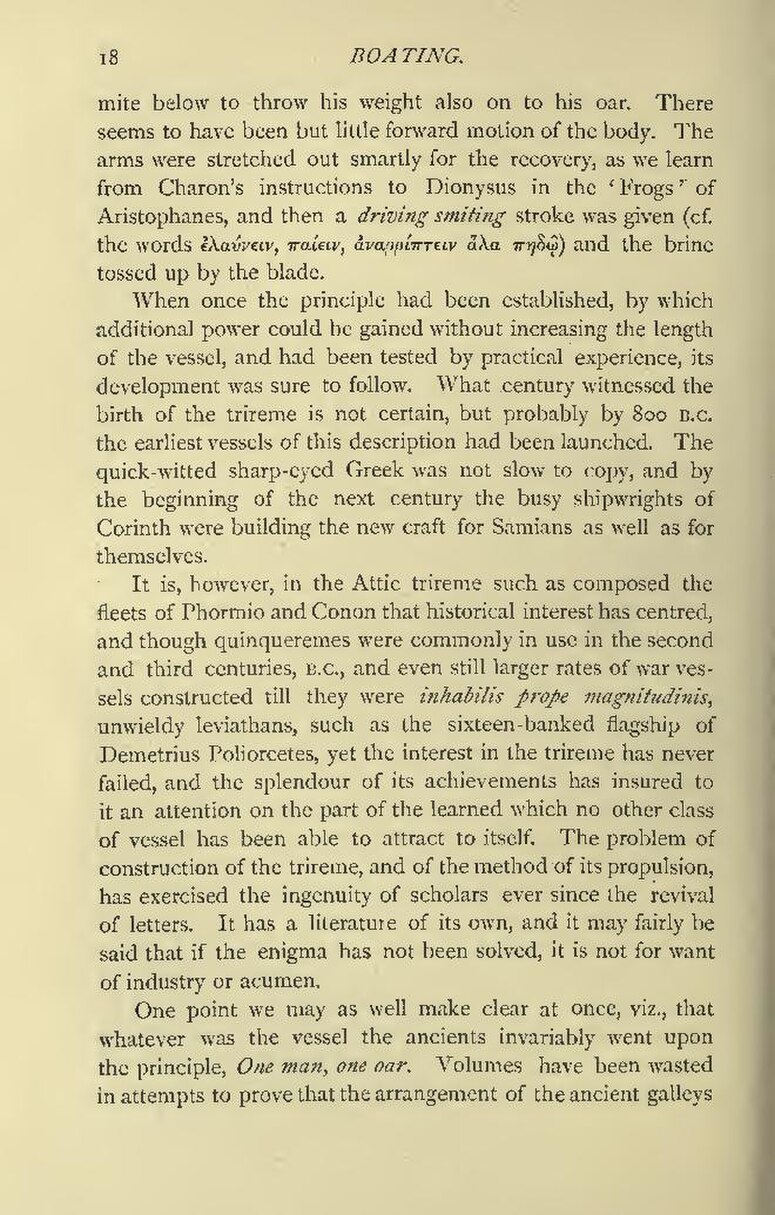mite below to throw his weight also on te his oar. There seems to have been but litle forward motion of the body. The arms were stretched out smartly for the recovery, as we learn from Charon’s instructions to Dionysus in the ‘Frogs’ of Aristophanes, and then a driving smiting stroke was given (cf. the words έλαύνειν, παίειν, άναορίπτειν άλα πηδώ) and the brine tossed up by the blade.
When once the principle had been established, by which additional power could be gained without increasing the length of the vessel, and had been tested by practical experience, its development was sure to follow. What century witnessed the birth of the trireme is not certain, but probably by 800 b.c. the earliest vessels of this description had been launched. The quick-witted sharp-eyed Greek was not slow to copy, and by the beginning of the next century the busy shipwrights of Corinth were building the new craft for Samians as well as for themselves.
It is, however, in the Attic trireme such as composed the fleets of Phortio and Conon that historical interest has centred, and though quinqueremes were commonly in use in the second and third centuries, b.c., and even still larger rates of war vessels constructed till they were inhabilis prope magnitudinis, unwieldy leviathans, such as the sixteen-banked flagship of Demetrius Poliorcetes, yet the interest in the trireme has never failed, and the splendour of its achievements has insured to it an attention on the part of the learned which no other class of vessel has been able to attract to itself. The problem of construction of the trireme, and of the method of its propulsion, has exercised the ingenuity of scholars ever since the revival of letters. It has a lilerature of its own, and it may fairly be said that if the enigma has not been solved, it is not for want of industry or acumen,
One point we may as well make clear at once, viz., that whatever was the vessel the ancients invariably went upon the principle, One man, one oar, Volumes have been wasted in attempts to prove that the arrangement of the ancient galleys
